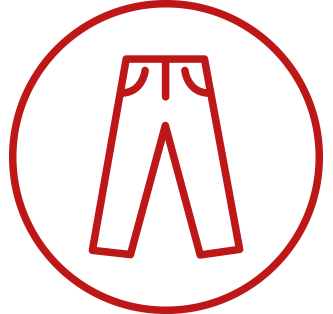
Brake Rotor Replacement DIY Guide
DISCLAIMER
As always, follow all safety protocols. Don't undertake this task if you aren't comfortable with it, fully understand it, and are capable of completing it. The information provided may be incomplete or inaccurate. You are ultimately responsible for anything you do. Neither Redpants, LLC or myself is responsible or liable for anything that may occur.
Brake rotors are a wear item and need to be replaced when they've worn down to a certain level. The front rotors are really easy to replace, but the rear ones are a bit difficult due to the handbrake system.
A special tool is required to wind the handbrake caliper pistons back into the calipers. I bought a couple different kits from Amazon, but each was too large to fit into the caliper and neither had the right adapter plate for the caliper piston. I eventually took the closest adapter plate to what I needed and filed it down to a size that would work, then used needle-nose pliers to twist the adapter and wind the piston back into the caliper. I'll update this DIY guide with a link to the correct tool once I've found it so you don't have to go through that, too.
Needed
Brake rotors
Brake rotor retention bolts
Brake caliper bolts
- 6-Piston calipers
- 4-Piston calipers
Floor jack
Jack stands
Tools to remove the wheels
Tools and supplies for the brake pad job
Tools and supplies for the brake caliper job
T40 Torx bit
Ratchets for the above bit
Torque angle gauge
Rubber mallet
Anti-seize compound
Brakleen or similar product
Straps or similar
About 3 hours
Torque Ratings
Brake rotor retention bolts: 10.5 Nm. (8 lb/ft)
Brake caliper bolts: 20 Nm. + 66-70° (15 lb/ft + 66-70°)
Handbrake caliper bolts: 15 Nm. + 90-94° (11.5 lb/ft + 90-94°)
Before you begin
New bolts should be used when working on the braking system. In this job, that includes caliper mounting bolts and rotor retention bolts.
Torque specs sometimes include torque angle. To measure torque angle, you need a torque angle gauge.
DO NOT let the brake calipers hang from the brake hoses. The weight of the calipers can damage the hoses, even if you don't see the damage. This can result in a severe loss of braking.
DO NOT get anti-seize or anti-squeal on anything other than the surfaces that need them. If either of these get on the brake pad friction material or brake rotor surface where the pads make contact with the rotor, you can have a severe loss of braking.
DO NOT cut any corners or take shortcuts with this job. A properly-functioning brake system is an incredibly important part of safety.
Step 1
Brake the lug nuts loose on each of the wheels that will come off to change the brake pads. You don’t need to remove them entirely, just one spin will do.
Raise the car using a lift or a jack and jack stands, then take off the wheels.
Step 2
Step 3
Use the T40 Torx bit and ratchet to remove the two retention bolts from the brake rotor (circled in red in the pic below). Be extremely careful to apply smooth, even torque when removing these as they can strip very easily! If they strip, you'll need to drill them out so be very careful!
Step 4
Thread a pair of lug nuts back onto two of the lugs (as seen in the picture above). You only need to get them on a little bit, not all the way, as these will be used to prevent the rotor from flying loose when you knock the rotor off the hub.
Use the rubber mallet to knock the rotor loose from the hub. Be careful to avoid hitting anything other than the brake rotor while doing this.
Step 5
Clean the hub's mounting surfaces with sandpaper, a scratch pad, or similar item. You don't necessarily need to get it perfectly rust-free, but you'll want to get it smoothed down to a reasonable level. Use Brakleen and a shop towel to wipe away rust and debris, then apply anti-seize compound to the mounting surfaces to keep them from seizing together the next time the rotors are removed.
Step 6
Reassemble everything! Put the new brake rotor in place and install the brake rotor retention bolts. Install the brake calipers using new brake caliper bolts. Install brake pads and pump the brake pedal a few times to reseat them. If you’ve just replaced a rear brake rotor, reinstall the handbrake and check its function.
And that’s it!


